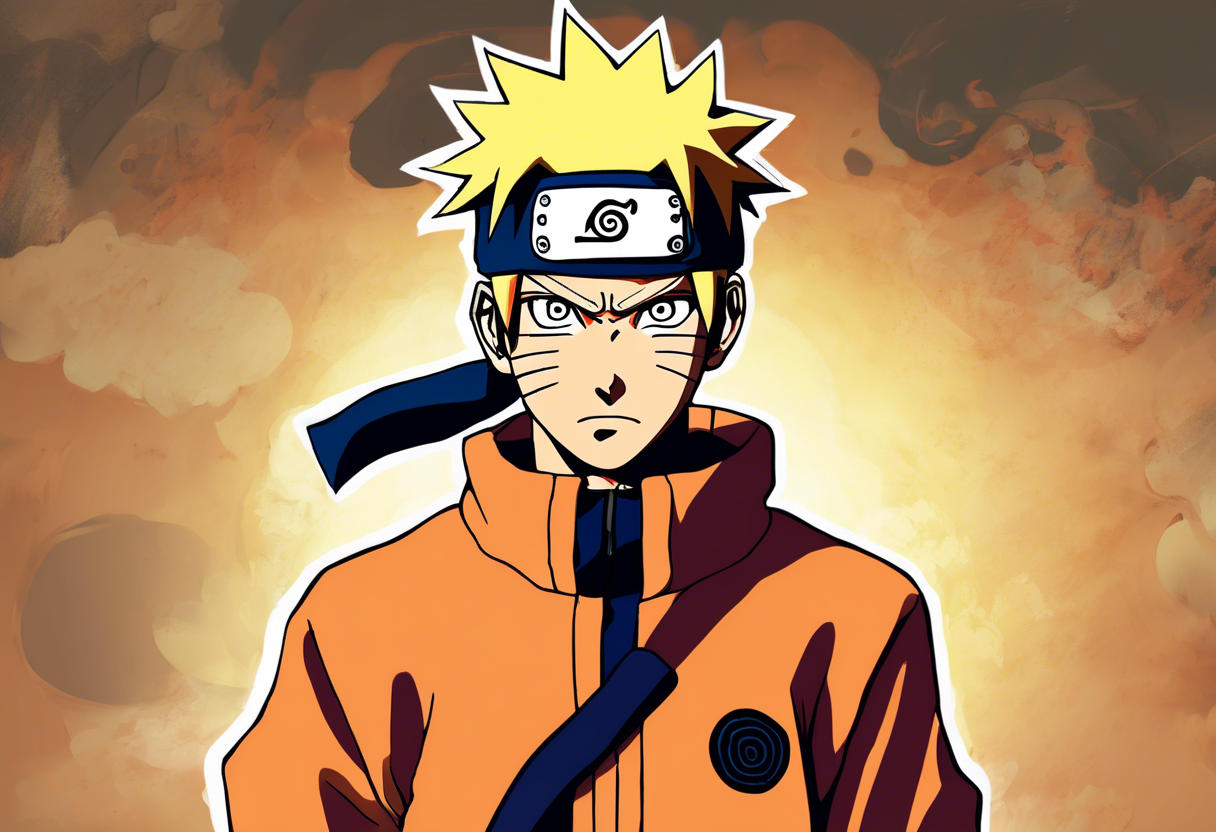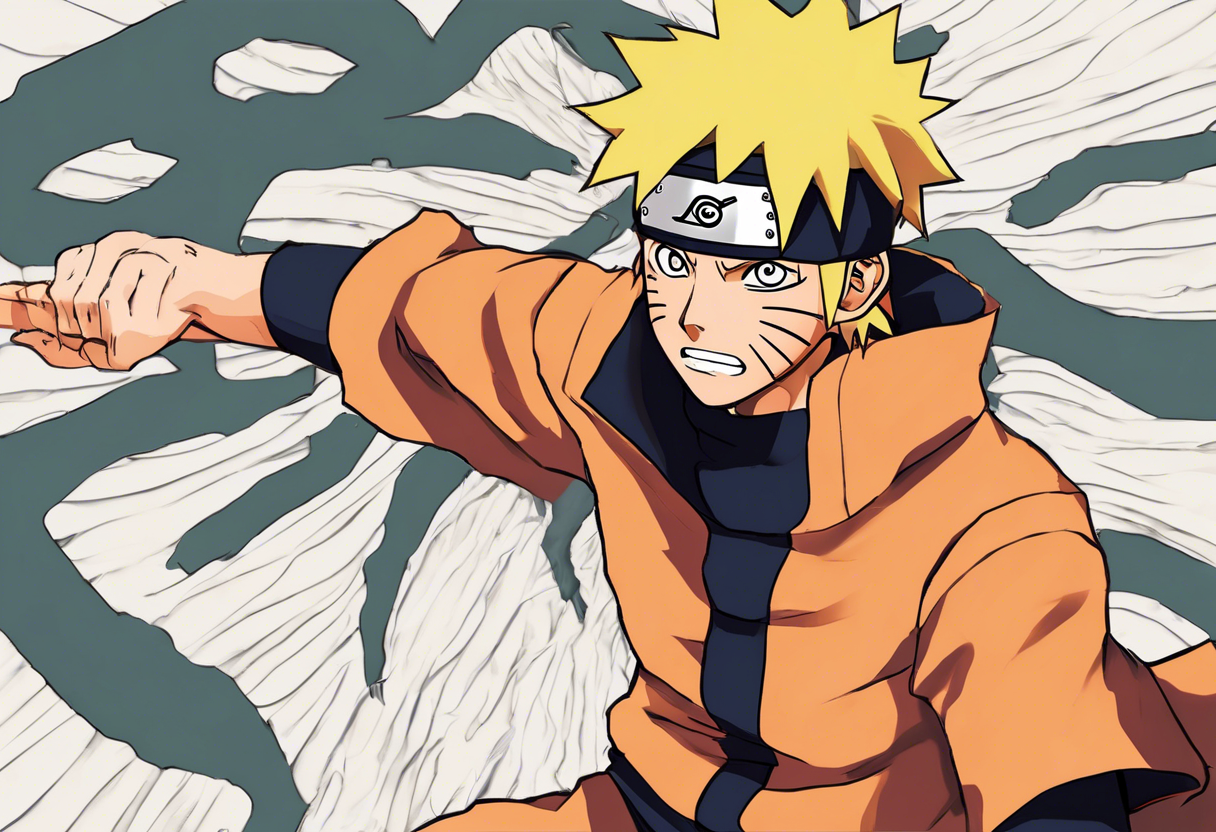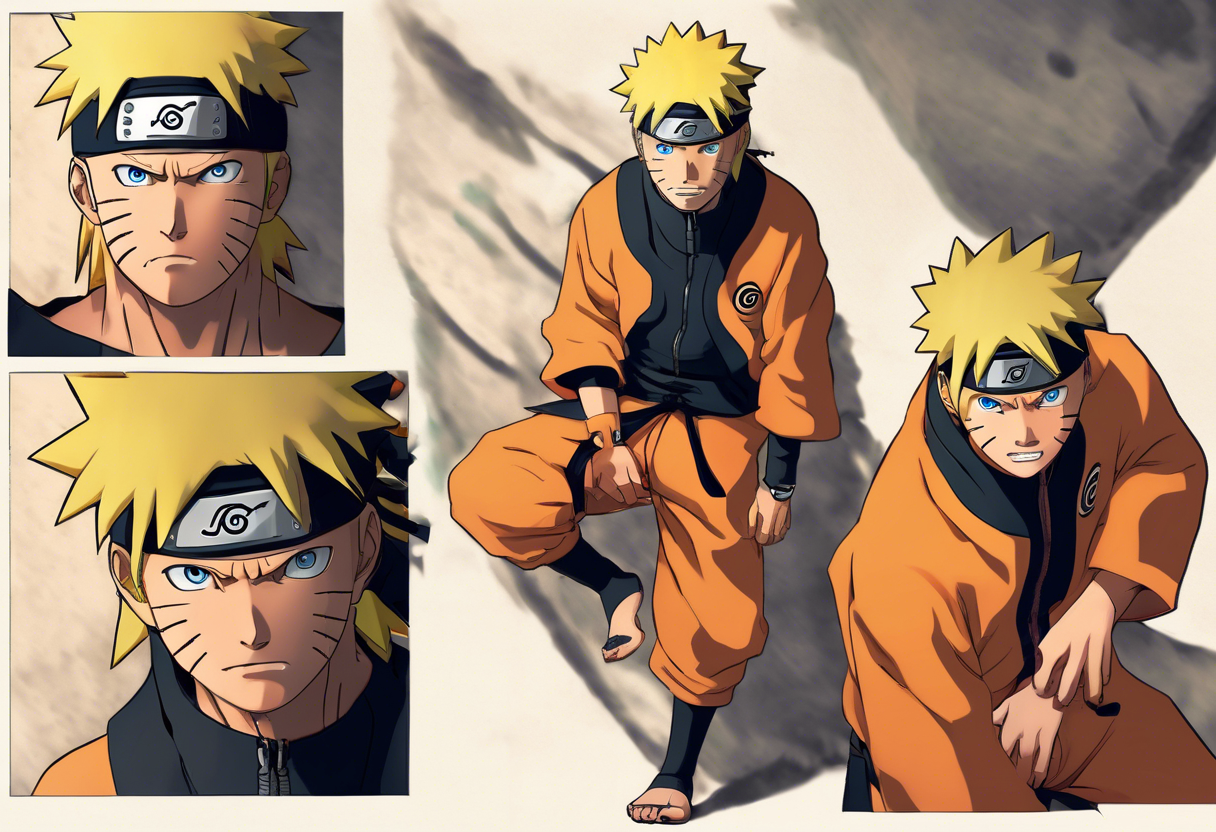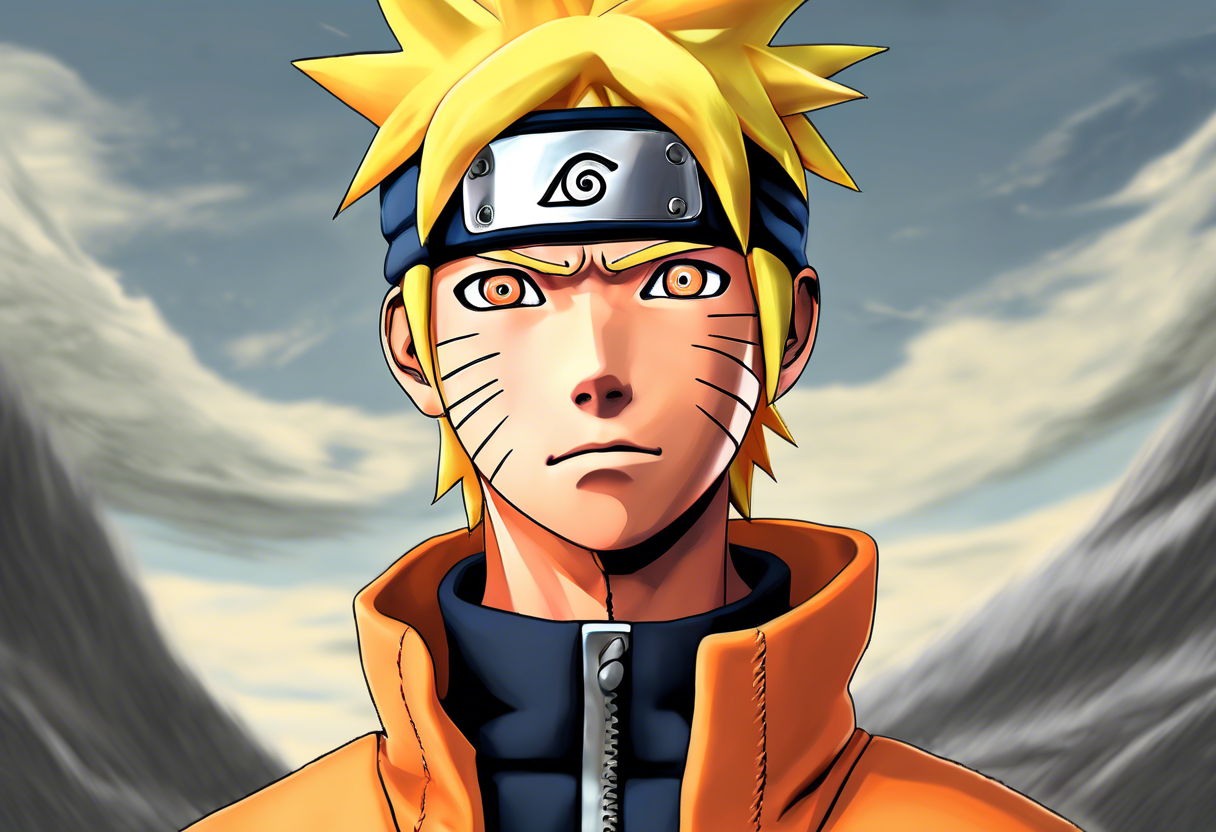Contents
Naruto Uzumaki
Introduction
Naruto Uzumaki is the titular protagonist of the popular manga and anime series Naruto, created by Masashi Kishimoto. Introduced as a 12-year-old orphan boy with blond, spiky hair and blue eyes, Naruto is a ninja from the fictional Hidden Leaf Village (Konohagakure) who carries within him the powerful Nine-Tailed Fox spirit, known as Kurama [2][4].
Naruto was the first character created by Kishimoto during the conception of the series and was designed with many traits from other shōnen characters. His creation was influenced by Kishimoto’s desire to craft a character that embodied both simplicity and complexity, making him relatable yet unique. Naruto’s backstory, marked by his isolation and ridicule from the villagers due to being the host of the Nine-Tailed Fox, sets the stage for his journey towards becoming the Hokage, the leader of Konohagakure, and gaining the respect and approval of his village [1][2].
Role in the Story
Naruto’s storyline is central to the narrative of the Naruto series. At the beginning, Naruto is a young boy who is shunned by the villagers because he is the host of the Nine-Tailed Fox. Despite this, he aspires to become the Hokage to gain respect and protect his village. Naruto graduates from the Ninja Academy and joins Team 7, along with Sasuke Uchiha and Sakura Haruno, under the leadership of Kakashi Hatake. This team dynamic forms the core of the series’ early arcs, with Naruto, Sasuke, and Sakura completing various missions and facing numerous challenges together [1][4].
As the series progresses, Naruto’s journey becomes more complex. Sasuke’s defection from the village and his pursuit of power lead to a significant rift in the team. Naruto, determined to bring Sasuke back and protect his friends, embarks on a series of adventures that test his resolve, strength, and character. During Part II of the series, Naruto returns to Konohagakure after a two-and-a-half-year training period and rejoins his team, now reformed as "Team Kakashi" with new members Sai and Yamato. This period sees Naruto facing even greater challenges, including the Fourth Great Ninja War and the final battles against Madara Uchiha and Kaguya Ōtsutsuki [1][4].
Naruto’s relationships with other characters are pivotal to his development. His bond with Sasuke, despite their rivalry and Sasuke’s eventual betrayal, remains a central theme throughout the series. Naruto’s friendships with Sakura, Kakashi, and other characters like Hinata Hyuga, who later becomes his wife, are also crucial in shaping his personality and motivations. His mentorship under Jiraiya and later under the Fourth Hokage’s legacy further influences his growth as a ninja and a leader [1][2].
Character Analysis
Naruto’s personality is a blend of optimism, determination, and a strong sense of justice. His carefree, boisterous, and cheerful nature allows him to form strong bonds with other characters, despite initial difficulties. Naruto’s catchphrase "Believe it!" (~だってばよ, dattebayo) reflects his unwavering resolve and positive attitude. However, he also has a darker side, symbolized by the Nine-Tailed Fox within him, which represents his negative emotions and the pain of his past [2][5].
Naruto’s motivations are deeply rooted in his desire for recognition and respect. Growing up isolated and ridiculed, Naruto seeks to prove himself and become the Hokage to gain the approval of his village. This ambition drives him to overcome countless obstacles and challenges, often putting himself in harm’s way to protect his friends and village. His strength lies in his ability to inspire and bring people together, as well as his capacity for empathy and understanding [1][2].
Despite his many strengths, Naruto also has significant flaws. His impulsiveness and tendency to act without thinking often lead to trouble. However, these flaws are also part of what make him relatable and human. Over the course of the series, Naruto undergoes substantial development, maturing from a reckless young boy into a wise and compassionate leader. His ability to control the Nine-Tailed Fox’s chakra and his growth in both physical and emotional strength are key aspects of his character development [1][5].
Themes and Symbolism
Naruto Uzumaki embodies several key themes of the series, including the importance of friendship, perseverance, and the pursuit of one’s dreams. His journey symbolizes the struggle for acceptance and the power of positive change. The Nine-Tailed Fox within him represents the duality of human nature, with its power symbolizing both his strength and his inner turmoil [2][5].
The theme of friendship is particularly significant, as Naruto’s relationships with his teammates and other characters are central to the narrative. His unwavering dedication to his friends and his willingness to risk his life for them illustrate the depth of these bonds. The series also explores themes of honor, duty, and the consequences of war, all of which are reflected in Naruto’s actions and decisions [3][4].
Cultural Impact
Naruto Uzumaki has had a profound cultural impact both within Japan and globally. The Naruto series has become a cultural phenomenon, resonating with audiences across various demographics. In Japan, the series aligns with traditional Japanese values such as honor, duty, and perseverance, while also addressing social issues like discrimination and social inequality [3][4].
Internationally, Naruto has gained a devoted fanbase in regions such as North America, Europe, and Southeast Asia. The series’ universal themes of friendship, personal growth, and overcoming obstacles have transcended cultural boundaries, making it a beloved franchise worldwide. The localization and English adaptation of the series have further expanded its reach, attracting both children and adults [3][4].
Naruto’s influence extends beyond the anime and manga, with numerous spin-offs, video games, merchandise, and even live-action adaptations. The franchise has inspired technological innovations such as virtual reality and 3D holography, allowing fans to immerse themselves in the Naruto universe. This broad appeal has solidified Naruto’s position as a cultural icon [3][4].
Critical Reception
Naruto Uzumaki has received widespread critical acclaim for his character development and the impact he has on the narrative. Critics and audiences alike have praised his personality and the way he avoids stereotypes typically seen in shōnen manga. His growth from a young, impulsive boy to a mature and compassionate leader has been particularly noted, making him a compelling and relatable character [2][5].
However, some initial criticisms labeled Naruto as a typical manga and anime protagonist. Over time, though, his unique traits and the depth of his character have been recognized, making him stand out in fiction. Scholarly attention has also been drawn to Naruto’s character, with analyses focusing on his psychological development and the symbolic elements of his story [2][5].
Legacy
Naruto Uzumaki’s enduring appeal lies in his relatable character, inspiring story, and the universal themes he embodies. As the Seventh Hokage, Naruto’s legacy extends beyond the series itself, influencing other works and character archetypes. His story serves as a modern hero’s journey, where an underdog rises to greatness through determination and the support of his friends.
Naruto’s impact on popular culture is evident in the numerous adaptations, spin-offs, and merchandise that continue to captivate audiences. His character has inspired a sense of community and connection among fans, fostering a global fandom that transcends cultural boundaries. As a cultural icon, Naruto Uzumaki remains a significant figure in contemporary discussions about anime, manga, and the broader pop culture landscape [3][4].
References
- https://en.wikipedia.org/wiki/List_of_Naruto_characters
- https://en.wikipedia.org/wiki/Naruto_Uzumaki
- https://treendly.com/blog/unleashing-the-hidden-power-exploring-the-soaring-demand-for-naruto-in-the-pop-culture-sphere
- https://en.wikipedia.org/wiki/Naruto
- https://www.giantbomb.com/naruto-uzumaki/3005-790/







